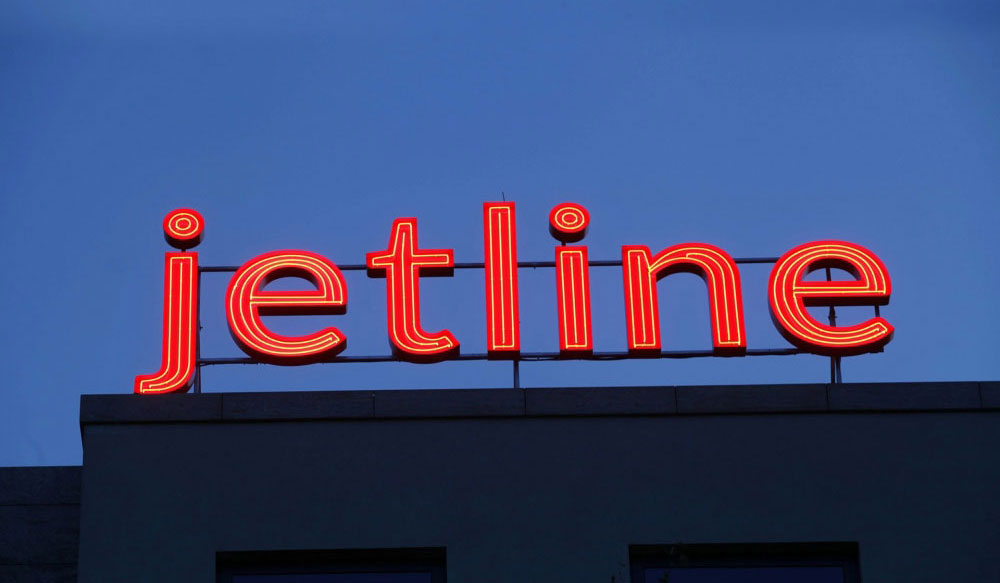A Short (so Far) History of a Neon Sign
[vc_row type="in_container" full_screen_row_position="middle" scene_position="center" text_color="dark" text_align="left" overlay_strength="0.3" shape_divider_position="bottom"][vc_column column_padding="no-extra-padding" column_padding_position="all" background_color_opacity="1" background_hover_color_opacity="1" column_shadow="none" column_border_radius="none" width="1/1" tablet_text_alignment="default" phone_text_alignment="default" column_border_width="none" column_border_style="solid"][vc_column_text]When the idea of a neon sign for the roof of our new office on Broniewskiego Street in Warsaw's Żoliborz district came up, we didn't hesitate for a second.

Yes, it would be fantastic to have a neon sign.
After all, the urban space is the natural habitat for neon signs, and their communicative function
is, in turn, natural for us, a company dealing with communication in space. The same day, we checked with the administration of the office building, which we were soon to move into,
the technical and structural possibilities for installing a neon sign. There were no obstacles, so we set about designing the appearance and developing the concept for mounting the letters on the roof.

We decided that the Jet Line neon sign would be a spatial representation of our new logo, designed by Ania Jachimczyk.
The warm red color of the logo symbolizes passion, energy, and action; we believe it conveys positive emotions that we daily invest in constructive relationships with ourselves and others. The intense color influenced the choice of a simple, elegant form for the letters, based – like our entire identity – on the Lato typeface, created by Łukasz Dziedzic.

The entire idea, technical concept for implementation, and method of mounting the neon sign belonged to Andrzej Maszewski
from Synchro.Lab and his team.
Andrzej developed the design, compiled the documentation for the relevant authority issuing consent
for the installation, and supervised the production of the neon sign and its installation on the roof.

The entire process took six weeks, including four (30 days) for the required notification of construction work.
And so, in September 2015, 105 years after the appearance of the first glass tube filled with gas
and glowing with a color dependent on its type, it appeared on the roof of the intimate office building in Żoliborz:
IT.
The Jet Line NeON, made using traditional methods, from bent glass and a gas mixture
in a color as close as possible to the company's Pantone Coated 1778 C.
[/vc_column_text][/vc_column][/vc_row]






